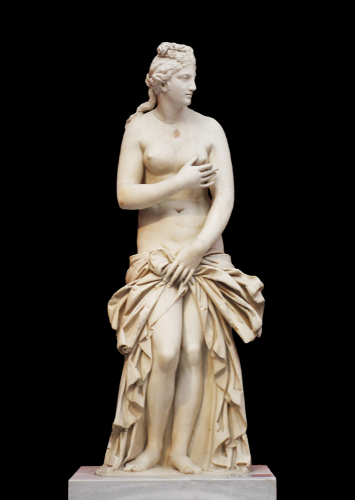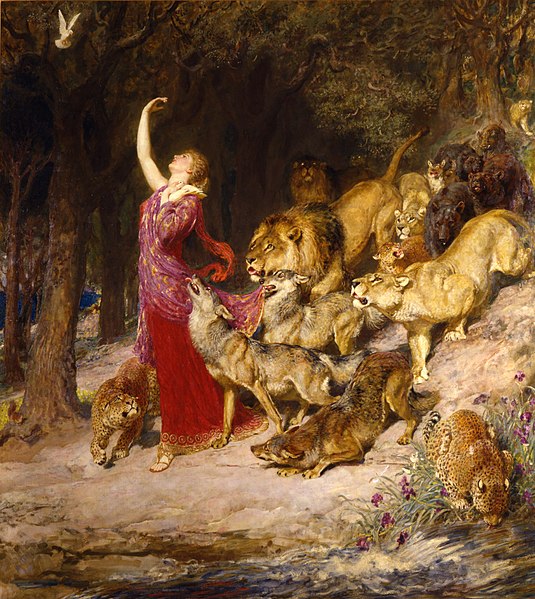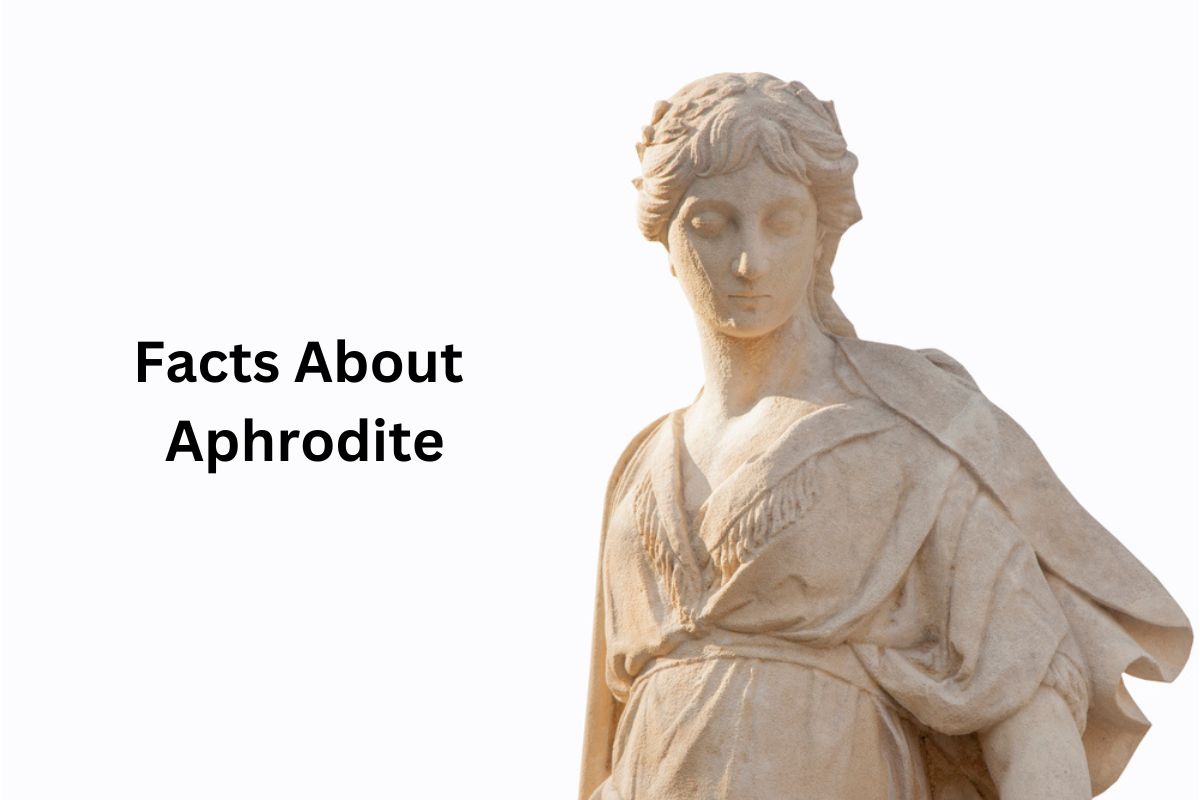Aphrodite, the Greek goddess of love, beauty, pleasure, and fertility, holds a prominent place among the twelve Olympian gods and goddesses. Born from sea foam, she is depicted as a captivating and seductive deity, often accompanied by Eros, the god of love.
Aphrodite’s mythology is filled with passionate love affairs, including her tumultuous relationship with Ares, the god of war. Her involvement in the Trojan War, where she played a pivotal role in the elopement of Helen of Troy, showcases her power to incite desire and influence destiny.
Temples dedicated to Aphrodite, such as the famous Temple of Aphrodite in Corinth, were centers of worship and sought her blessings for matters of love, relationships, and fertility.
Symbols like roses, myrtles, doves, and seashells represent her essence. Aphrodite’s enduring influence extends beyond Greek mythology, finding a counterpart in Roman mythology as Venus.
Her timeless appeal continues to inspire artists, writers, and musicians, making her an iconic figure associated with love and beauty in popular culture.
Aphrodite Facts
1. Greek goddess associated with love, beauty, pleasure, and fertility
She holds a prominent place among the twelve Olympian gods and goddesses of Greek mythology. As the goddess of love, she represents both the romantic and sensual aspects of love, as well as the concept of divine or unconditional love.
Also Read: Facts About Poseidon
Her domain also extends to beauty, where she embodies physical attractiveness, charm, and aesthetic appeal. Additionally, Aphrodite is associated with pleasure, encompassing desires, passions, and the enjoyment of life.
Finally, she is connected to fertility, as her presence is believed to bring forth abundance and the growth of life.

2. Born from sea foam in Greek mythology
The most famous account of her birth is from Hesiod’s “Theogony.” According to this myth, Aphrodite emerged from the sea foam created by the severed genitals of the Titan Cronus being cast into the sea by his son, Zeus.
Also Read: Demeter Facts
As the foam bubbled and churned in the waters, Aphrodite arose fully grown and radiant, with beauty and allure.
3. Depicted as a beautiful and seductive goddess
Artists and poets throughout history have portrayed her with captivating physical features, such as a flawless complexion, enchanting eyes, and a graceful figure. She is often adorned with elegant clothing and jewelry, emphasizing her allure and status as a goddess.
Aphrodite’s appearance conveys not only her divine beauty but also her ability to captivate and inspire desire in both gods and mortals. Her irresistible charm and magnetic aura make her a symbol of feminine allure and allure in general.
4. Often accompanied by Eros, the god of love
Eros, also known as Cupid in Roman mythology, is depicted as a young, winged boy or youth armed with a bow and arrows. He is considered Aphrodite’s constant companion and assistant in matters of love and desire.
Eros shoots his arrows at gods and mortals, causing them to fall in love or experience intense desire. This partnership between Aphrodite and Eros emphasizes the inseparable connection between love and desire.
5. Had a love affair with the god of war, Ares
Her most famous and enduring love affair was with Ares, the god of war and one of the twelve Olympians. Despite being married to Hephaestus, Aphrodite and Ares engaged in a passionate and tumultuous relationship.
Their union resulted in the birth of several children, including Eros (Cupid), the god of love, and Harmonia, the goddess of harmony.

6. Married to Hephaestus but had many extramarital affairs
Aphrodite’s marriage to Hephaestus, the Greek god of fire and blacksmiths, is an intriguing aspect of her mythology. According to the stories, Aphrodite was forced into this marriage against her will by Zeus, the king of the gods. While Hephaestus was loyal and devoted to his wife, Aphrodite had numerous extramarital affairs.
Despite being married to Hephaestus, Aphrodite’s irresistible beauty and allure attracted the attention of many gods and mortals. She engaged in passionate relationships with various gods and even mortals, often driven by her own desires and the pursuit of pleasure. Her most famous and notable affair was with Ares, the god of war, with whom she had children like Eros and Harmonia.
Hephaestus, being the husband betrayed, often felt the pain of his wife’s infidelity. However, he was also a crafty and skilled god, known for creating magnificent objects. In some versions of the myth, Hephaestus devised traps or devices to catch Aphrodite and her lovers in the act, exposing their illicit affairs.
7. Played a role in the Trojan War by promising Paris the most beautiful woman
According to the myth, Paris, a prince of Troy, was tasked with judging a beauty contest between three goddesses: Hera, Athena, and Aphrodite. Aphrodite promised Paris the love of the most beautiful mortal woman in the world if he chose her as the winner.
Paris selected Aphrodite, and as a result, Helen of Troy, renowned for her beauty, became infatuated with him and left her husband, Menelaus, which triggered the events that led to the Trojan War.
Aphrodite’s influence in the conflict reflects her power to inspire desire, fuel passions, and incite both love and war.
8. Had temples and shrines dedicated to her in ancient Greece
The most famous among them was the Temple of Aphrodite located in Corinth. This temple served as a center of worship and was known for its sacred prostitutes who acted as priestesses of the goddess.
These individuals engaged in rituals and practices aimed at invoking Aphrodite’s blessings and ensuring fertility, love, and prosperity for the worshipers. The temple was a place where people sought divine intervention in matters of love, relationships, and fertility.
9. Symbols include roses, myrtles, doves, and seashells
Roses are closely linked to her, symbolizing love, beauty, and passion. Myrtles are also associated with her, representing fertility and immortality. Doves are considered sacred to Aphrodite, symbolizing peace, love, and devotion.
Seashells, particularly the scallop shell, are often depicted as her sacred symbol, signifying her birth from the sea. These symbols are used in art, literature, and religious rituals as representations of Aphrodite and the qualities she embodies.
10. Inspires various works of art, literature, and music throughout history
Throughout history, artists, writers, and musicians have drawn inspiration from her beauty, allure, and romantic themes associated with her. Countless artworks depict her in various forms, from classical sculptures to modern paintings.
She has been a central figure in numerous literary works, such as the epic poem “The Iliad” by Homer and the mythological tales of Ovid’s “Metamorphoses.” Aphrodite’s influence extends to music as well, with songs, operas, and ballets dedicated to her story and the themes of love and beauty she represents.
